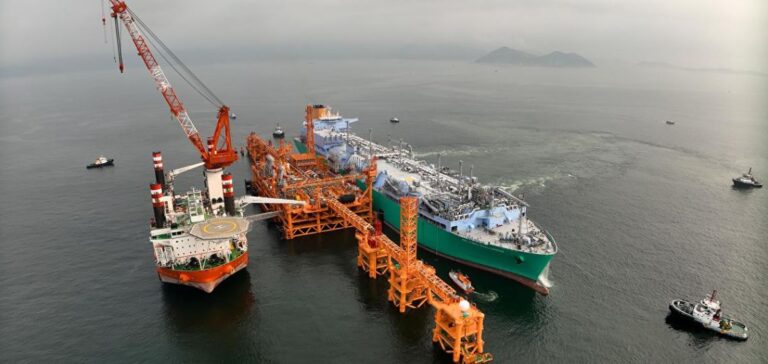Kunlun Energy, a subsidiary of PetroChina, carried out the very first ship-to-ship Liquefied Natural Gas (LNG) bunkering operation in Hong Kong, marking a breakthrough in maritime fuel. This intervention took place at Cheung Chau South Anchorage, where the container ship Zim Aquamarine received 2,200 tons of LNG. The refueling, which lasted seven hours, provided all the fuel needed for the journey to Istanbul, Turkey. According to officials, this advance underscores Hong Kong’s commitment to developing a competitive LNG bunkering hub.
Regional Coordination
Implementation follows the guidelines issued by the 20th Central Committee of the Communist Party of China, which encourages Hong Kong to strengthen its position as an international financial, maritime, and commercial center. The State Council’s Outline Development Plan for the Guangdong-Hong Kong-Macao Greater Bay Area also supports this dynamic. In this context, the authorities of Shenzhen and Hong Kong joined forces to streamline customs procedures and coordinate the transport of the bunkering vessel from Shenzhen. This cooperation highlights the importance of complementarity between the region’s ports.
The Shenzhen Development and Reform Commission emphasized that this model combining storage in Shenzhen and bunkering in Hong Kong enhances the combined strengths of both locations. Kunlun Energy intends to capitalize on this momentum by establishing a multi-energy system integrating gas, electricity, cooling and heating, hydrogen, and special gases. The goal is to meet the growing needs of international and domestic markets while bolstering Hong Kong’s role as an LNG refueling hub. Historically, PetroChina primarily conducted its LNG bunkering at the Port of Shenzhen Yantian.
Port Ambitions
In 2024, the Port of Shenzhen Yantian reached an LNG bunkering volume of 300,000 cubic meters, of which 262,800 cubic meters were supplied by PetroChina and 34,700 cubic meters by China National Offshore Oil Corporation (CNOOC). Other port complexes in China, including Shanghai Yangshan, Ningbo Zhoushan, and Guangzhou, have also acquired LNG bunkering capabilities on a transit basis. Shanghai Yangshan has totaled 444,000 cubic meters of LNG bunkering in 2024, ranking third worldwide after Rotterdam and Singapore. This development illustrates the determination of Chinese stakeholders to build an extensive and efficient LNG supply network.
The growing demand for maritime fuel based on LNG is driving energy companies to innovate in their logistics chains. Kunlun Energy’s strategy aligns with this trend by offering not only a reliable supply but also facilities tailored to commercial challenges. Several industry leaders believe that the rise of these initiatives in the Greater Bay Area enhances Hong Kong’s attractiveness for international operators. The development of multi-energy infrastructures could prove decisive for the competitiveness and expansion of the Asian LNG market.






















